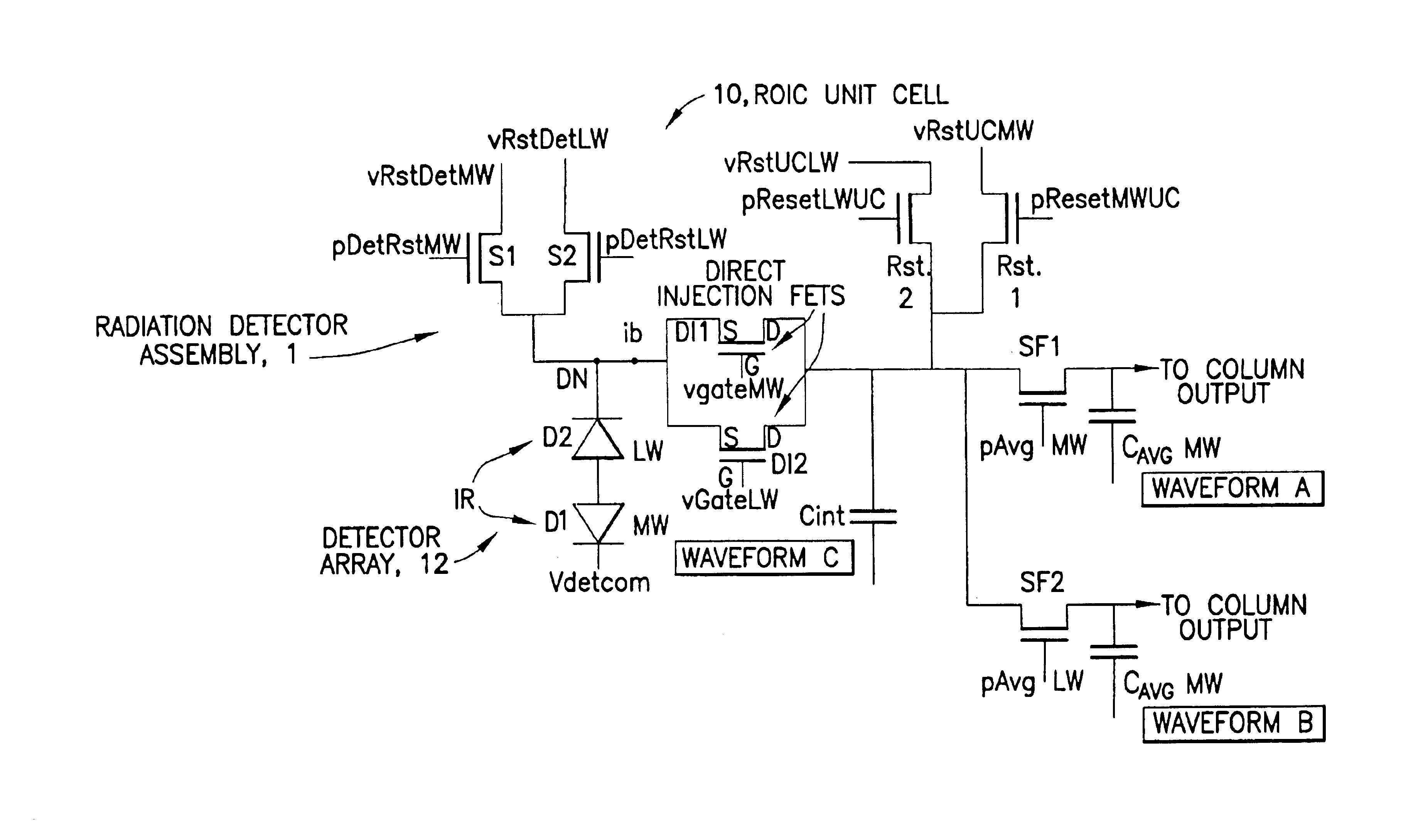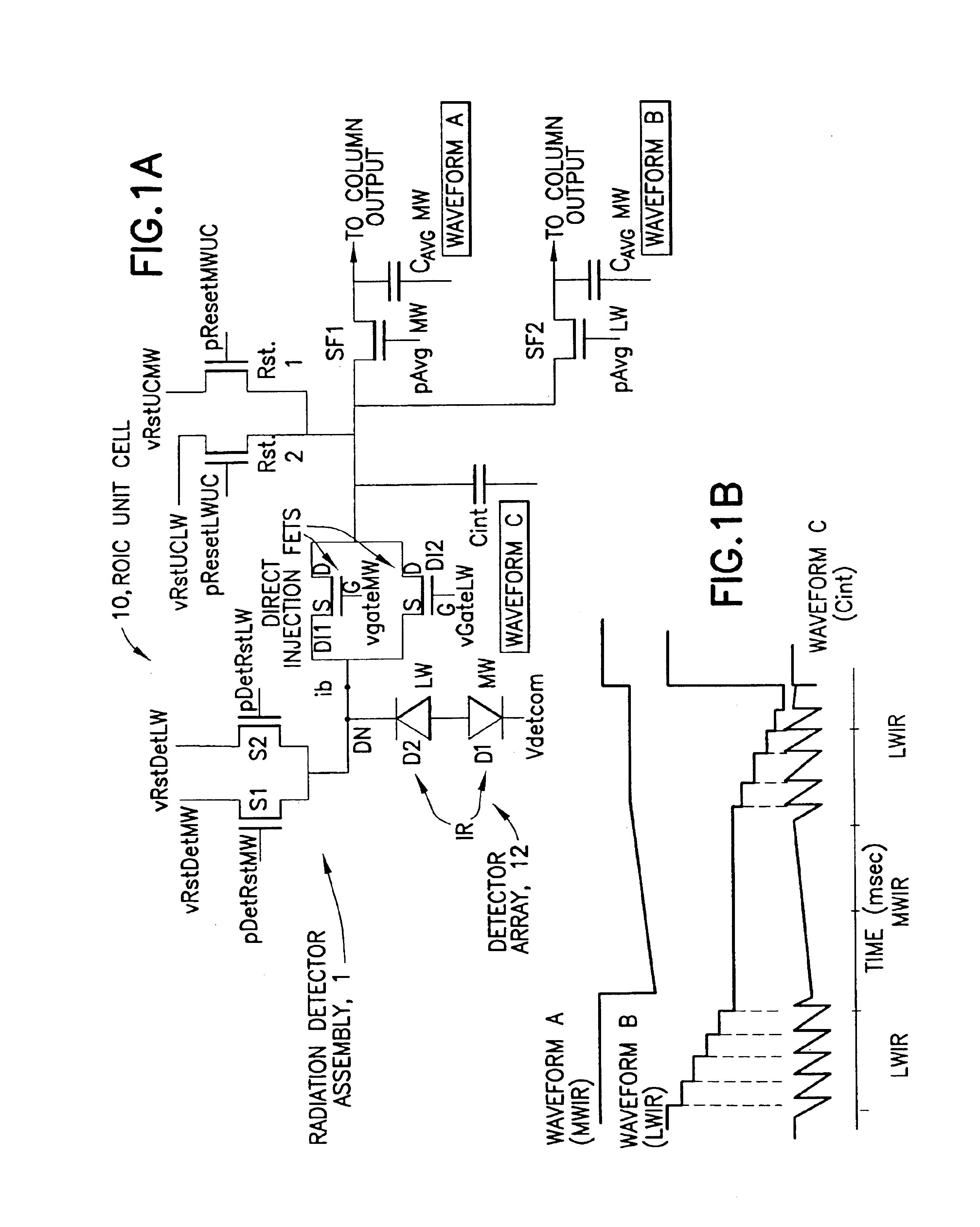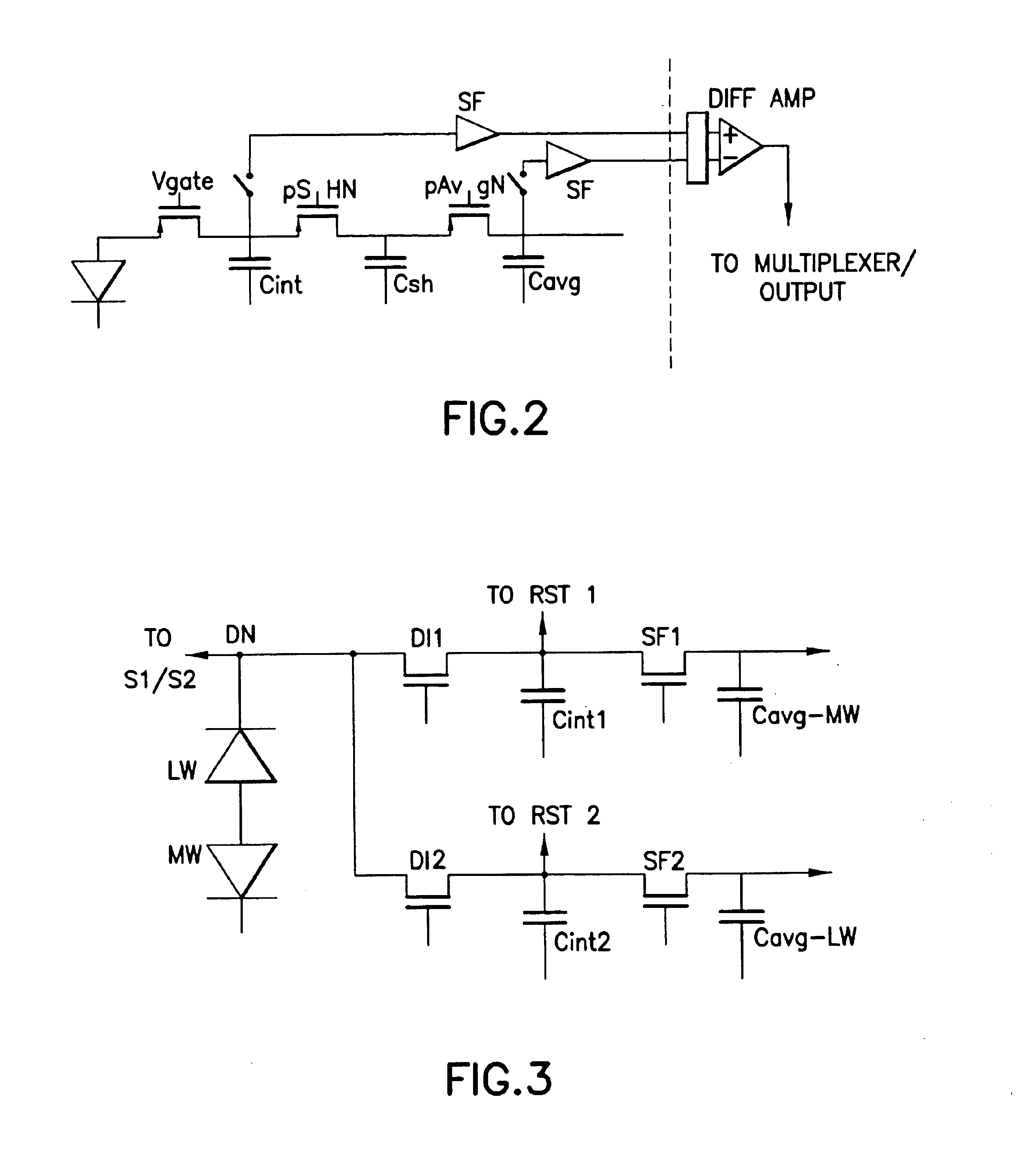IRFPA ROIC with dual TDM reset integrators and sub-frame averaging functions per unit cell
a technology of integrators and subframes, applied in the field of electromagnetic radiation detectors, can solve the problems of affecting the development and/or production of compact and/or affordable multi-spectral (color) ir imaging systems, affecting the accuracy of irfpa roic, and the inability to meet such critical and demanding applications. , the effect of reducing complexity, improving temporal registration, and quickly alternate integration
- Summary
- Abstract
- Description
- Claims
- Application Information
AI Technical Summary
Benefits of technology
Problems solved by technology
Method used
Image
Examples
Embodiment Construction
[0023]Reference is made to FIG. 1 for showing an embodiment of a ROIC unit cell circuit 10 constructed in accordance with these teachings. The unit cell circuit 10 is amenable to fabrication in a CMOS process employing, by example, 0.5 micron or 0.35 micron design rules. The unit cell circuit 10 is coupled during use to a detector array 12, constructed as an array of back-to-back photodiodes D1 and D2. In the illustrated example D2 is responsive to Long Wavelength IR (LWIR, e.g., 9.5-10.0 micron cutoff) and D1 is responsive to Medium Wavelength IR (MWIR), that is, to IR in the range of about 3 microns to about 8 microns. However, in other embodiments photodiode pairs that are responsive to other spectral regions could be employed, such as photodiodes responsive to Short Wavelength IR (SWIR) and MWIR, or SWIR and LWIR, or to SWIR (or MWIR or LWIR) and Very Long Wavelength IR (VLWIR). The unit cell circuit 10 is preferably coupled to the photodiode pair of the detector array 12 at a s...
PUM
 Login to View More
Login to View More Abstract
Description
Claims
Application Information
 Login to View More
Login to View More - R&D
- Intellectual Property
- Life Sciences
- Materials
- Tech Scout
- Unparalleled Data Quality
- Higher Quality Content
- 60% Fewer Hallucinations
Browse by: Latest US Patents, China's latest patents, Technical Efficacy Thesaurus, Application Domain, Technology Topic, Popular Technical Reports.
© 2025 PatSnap. All rights reserved.Legal|Privacy policy|Modern Slavery Act Transparency Statement|Sitemap|About US| Contact US: help@patsnap.com



